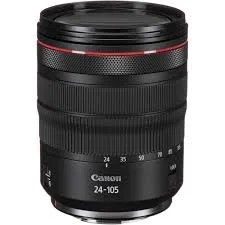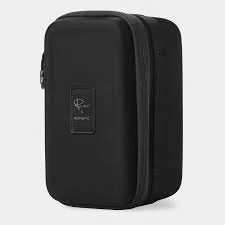My Cameras and lenses
Canon EOS R
At the heart of my photography kit is the Canon EOS R mirrorless camera. I purchased this camera body a little over 3 years ago and it’s been amazing. From capturing landscapes to the stars, this camera has been perfect. The R is a mirrorless, full frame camera with a 30 megapixel sensor, making it an excellent upgrade from a DSLR, (which is what I did).
Amazon: https://amzn.to/3SIyZT4
Canon EOS R7
The second and newest member to my kit is the Canon EOS R7. This is another one of Canon’s mirrorless cameras that I purchased a few months before my Antarctica expedition. This camera is primarily used for my wildlife portraits, and any other scenario that I would like to have a bit of extra zoom. This camera is equipped with a cropped CMOS sensor with 33 megapixels. This allows me to have a 1.6x magnification from my full frame EOS R, making it perfect for my wildlife photography. The cropped sensor, increased megapixels, and eye detection with autofocus are the key elements that made me choose this camera. My only complaint is that this camera does struggle with high ISO and low light situations, but nothing a little denoise can’t fix.
Amazon: https://amzn.to/3yurh85
Canon RF 15-35mm
The newest and widest lens in my kit is the Canon RF 15-35mm. I debated on getting a wide angle lens since at the time I preferred to shoot at 24mm and no wider. But after picking up this lens I opened a new world of possibilities, and it allows me to shoot different subjects in a way that I couldn’t do with my 24-105mm. This lens has quickly become one of my favorites to use, yet I still only use it for select scenes such as wildflowers, waterfalls, or wider scenes. The wide angle mixed with a nice constant aperture of f/2.8 makes this lens perfect for capturing a nice depth of field, or getting some nice Milky Way shots. Even if you aren’t a fan of wide shots, I still highly recommend checking out this lens. It could quickly become one of your favorites too.
Amazon: https://amzn.to/3yurnfX
Canon rf 24-105mm
The Canon RF 24-105mm was the first lens I purchased from Canon’s RF line of lenses (besides the nifty fifty). This lens is my go-to lens while out hiking or when I just want to bring one camera and lens. I love the wide focal range of this lens, allowing for wide shots at 24mm and 35mm, and allowing me to shoot distant subjects or get good compression while shooting at focal lengths like 85mm and 105mm. The wide focal range paired with a constant f/4 aperture makes this lens perfect for any scenario. Whether you shoot landscapes, nightscapes, portraits, or are still figuring out what you like to shoot, this lens is definitely the way to go.
Amazon: https://amzn.to/4cgj3ym
canon rf 100-400mm
The Canon RF 100-400mm lens is the longest lens in my kit, and it’s my main wildlife lens. While it isn’t the fastest lens, with an aperture of f/8 at 400mm, it’s perfect for long hikes due to it’s light weight and compact size. I thought about upgrading to the Canon RF 100-500mm for the extra reach and wider aperture, but decided to stick with a lightweight setup since I take this lens everywhere. This lens is also primarily attached to my R7, and is rarely used on my R since the crop sensor of the R7 turns this lens into a 160-640mm lens.
Amazon: https://amzn.to/3YEJzOz
Sony tough g-series sd cards
For my first few years doing photography I didn’t realize the importance of having quality SD cards. Sure as a beginner and while learning different techniques and settings I don’t see the point of investing in good SD cards, but as I progressed and moved onto more challenging techniques or subjects, I needed to upgrade. That’s when I found these Sony Tough SD cards and I have seen an improvement in my wildlife images. The fast reading speed of these cards has significantly helped me in taking home more wildlife shots that aren’t distorted like I noticed with my older cards. Plus I noticed a significant difference in build quality with these compared to my cheaper ones. If you’re someone who photographs wildlife, or are in the market for some new, quality SD cards, I can’t recommend these enough.
Amazon: https://amzn.to/4fyMPB8
Storage and accessories
Shimoda Designs explore v2 30l
I have tested a few different camera bags, from cheap $30 ones on Amazon, to other brands specifically for photographers, and the bags that Shimoda Designs make are incredible. I personally use the Explore V2 30L. This bag is the perfect size for all of my camera gear and other equipment listed on this page. It’s also the perfect size for air travel, whether it’s domestic or international, this bag is definitely my go-to.
Shimoda: https://shimoda-designs.j8ujgp.net/jrOyZM
Amazon: https://amzn.to/3AfYFA2
Nomatic x peter mckinnon accessory case
I use to throw all of my accessories into different pockets. One pocket for cleaning, another for portable chargers, etc. Eventually I found this case made by Nomatic and Peter McKinnon. This accessory case is perfect for keeping all of my smaller necessities in one place. I store my portable charger, lens cleaner, lens cloths, Lume Cube light, intervalometer, and a few other items in this case. It’s perfect for having all of my small accessories in one place.
Amazon: https://amzn.to/4ccFAfr
nomatic x peter mckinnon battery case
I have always prided myself for being organized, especially when it comes to my camera bag. I need to know exactly where everything is at a moments notice, and the battery case by Nomatic and Peter McKinnon has really helped keep the most important part of any trip organized. This little case is perfect for storing extra batteries. It can hold up to 3 Canon LP-E6NH batteries (which is what I use), or 6 Canon LP-E17 batteries (used for Canon’s Rebel line of DLSR’s). Not to mention that it fits perfectly in one of my front pockets of my Shimoda Explore V2 bag.
Amazon: https://amzn.to/3Acz1Ml
nomatic x peter mckinnon memory card case
Another product I use by Nomatic and Peter McKinnon is their memory card case. Just like their battery case, this allows me to store multiple SD and micro SD cards, all in a small, slim, and compact case. This case can hold up to 6 SD cards, 2 C-Fast cards, and micro SD cards. Perfect for long trips, big projects, and keeping your hard work safe until you can dump them onto the laptop.
Amazon: https://amzn.to/4fDV0vW
peak design capture clip
Something small but mighty that I’ve enjoyed having on my camera bag is the Peak Design Capture Clip. This little tool allows me to securely fasten my camera to my shoulder strap and carry my camera hands free. This has been especially helpful on long hikes when I want to keep my camera out for easy access, but don’t want to carry it or have it around my neck with my camera strap. This allows for easy and quick access to my camera on long and difficult hikes, where it might be steep or requires some minor rock climbing. Definitely a go-to for any outdoor/ adventure photographer who never wants to miss a moment!
Amazon: https://amzn.to/4d8CH0i
peak design slide lite camera strap
An essential accessory as a photographer is a good camera strap. Again, I tested a few different ones before finally deciding to stick with the Peak Design Slide Lite. My old camera strap snapped with no warning while I was climbing some rocks, and managed to grab my camera before my lens smashed onto the rocks below. I decided to go with the Peak Design strap after that incident and it hasn’t let me down yet, and I’ve been using it for almost 3 years! They offer lots of different color options, but I opted for the green to match my Shimoda bag.
Amazon: https://amzn.to/3SF32La











